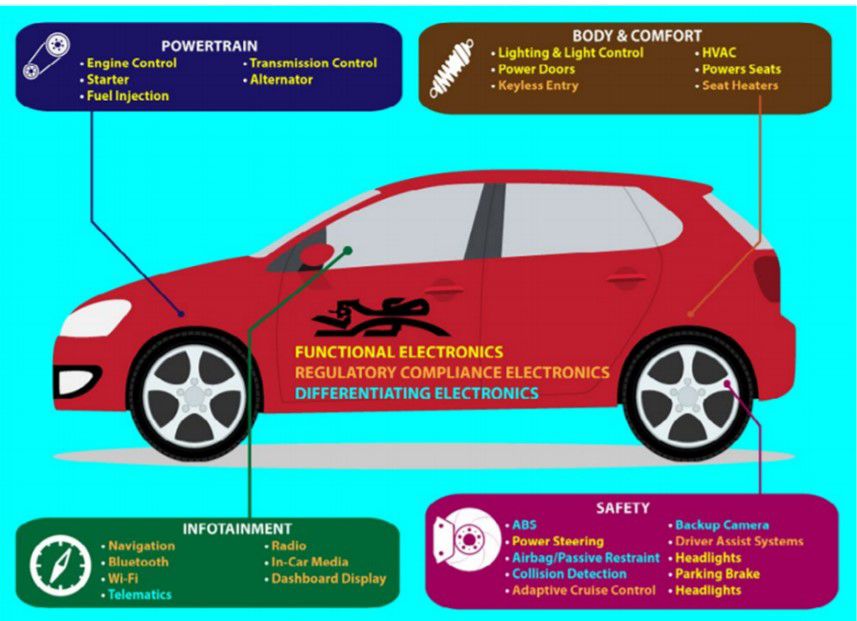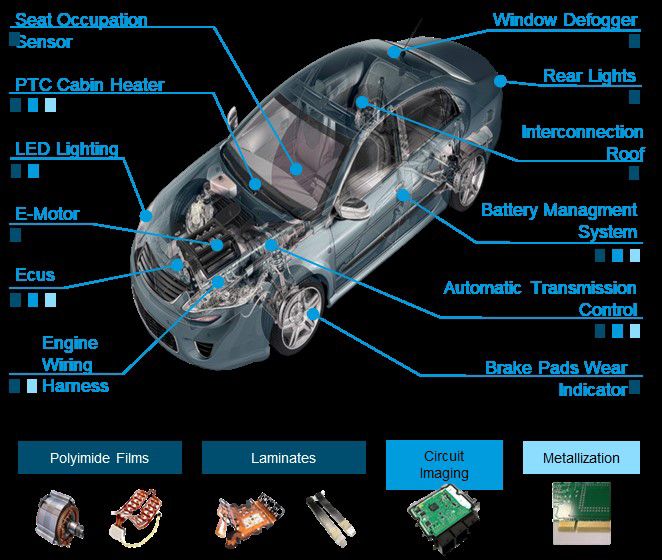Flexible Laminate Solutions Target Flexible-Circuit Challenges
September 19, 2019
As a trusted interconnect materials partner, DuPont has a proven portfolio of laminates, which provide the backbone for increasingly complex circuits built on both rigid and flex substrates. They provide mechanical integrity to flex circuits while allowing designers the freedom to fit circuits into the available footprint.
Our Pyralux® family comprises several laminates with capabilities that allow fabricators to pick and choose one or more products that best suit their needs. Pyralux AP, introduced in 1996, is an all-polyimide, double-sided copper-clad laminate that has excellent thermal, chemical and mechanical properties. Used for high-reliability and multilayer flexible circuitry applications, Pyralux AP sets the industry standard for high-performance laminates.
With the addition of our newest family member, Pyralux AG, we can address high- and low-end manufacturing needs associated with flex circuits for a wide range of applications. Pyralux AG offers high quality at just-right cost for emerging, fast-turn markets that utilize flex circuits. Its host of advantages include excellent dimensional stability, high copper-polyimide adhesion strength, good flex and bending performance, robust thermal and chemical resistance, and full compatibility with existing flex circuit fab processes.
Flexible circuits post unique challenges
Flexible printed circuits can be bent, folded and configured in nearly any shape or thickness imaginable. They are growing in popularity because they enable design and manufacture of smaller, lighter devices that are faster and more robust, with high electrical and thermal performance.
The advent of flexible circuits has helped drive technology advancements in a number of markets that benefit from these advantages. Some key examples include:
- 5G – smartphones and tablets
- Automotive – electric and autonomous vehicles
- IoT – wearables and consumer electronics
However, product manufacturers face some challenges when developing flexible sensors for these and other emerging applications due to their divergent requirements. While some applications have stringent demands regarding such parameters as thermal resistance, reliability and electrical performance, others require the miniaturization, design flexibility and mechanical reliability of flexible circuits – but are still highly cost sensitive. They require manufacturing materials that, while advanced, aren’t at the bleeding edge, and can be seamlessly integrated into a fab’s existing processes.
Materials like the flex laminates offered by DuPont.
The right product for your needs
Pyralux AG offers two advantages essential to its value proposition, both of which help manufacturers transition seamlessly from low- to high-volume manufacturing:
1) Global availability – Fabricators have global manufacturing footprints. While they typically build low-volume prototypes in the West, when they transfer to the East for high-volume production, they must source a new material. By using Pyralux AG from the start, they can avoid wasting time and money in having to change materials, speeding the transition.
2) Availability in both sheets and rolls – Sheets are generally used in prototype or smaller-volume manufacturing processes, while rolls are essential for mass production; both can be purchased worldwide. Having access to laminates in larger sizes also opens up new use cases for very long flexible circuits, which are especially relevant in medical applications.
Because Pyralux AG is fully compatible with Pyralux AP and other products in our Pyralux line, applications with mixed needs can implement multiple laminates to meet various requirements.
A prime example is the automotive market. Each year introduces new models with numerous types of sensors integrated throughout to fulfill a variety of important tasks (see Figure 1). Some are integral to safe operation of the vehicle, while others are intended to improve driving convenience or provide a more enjoyable experience for its occupants.

Figure 1. The total automotive sensor market is expected to reach $33.59 billion by 2022 at a CAGR of 7.8 percent. (Source: Markets and Markets
DuPont’s automotive solutions comprise not only our laminates for flex circuits, but also circuit imaging, metallization and a range of polyimide films, as Figure 2 illustrates. Together, they enable better thermal management, high speed and high frequency needed for sensors and radar in connected vehicles, integrated electronic control units, and high-reliability boards.

Figure 2. DuPont’s laminates and other materials are ideally suited for a wide range of automotive applications.
Leveraging our existing expertise to develop innovative new solutions for emerging market requirements is a hallmark of DuPont’s capabilities. Follow the links for more information about our new Pyralux AG material and our full portfolio of flex and rigid-flex laminate solutions.
Related Information

DuPont brings a deep understanding of high-performing materials to enhance printed circuit board materials reliability for flexible and rigid boards.

DuPont offers laminate and adhesive materials to enable the highest performing flexible and rigid-flex PCBs.

DuPont adhesiveless copper clad flexible polyimide laminates feature greater design latitude for high frequency and impedance controlled applications.
We’re here to help.
We love to talk about how our electronics solutions can build business, commercialize products,
and solve the challenges of our time.